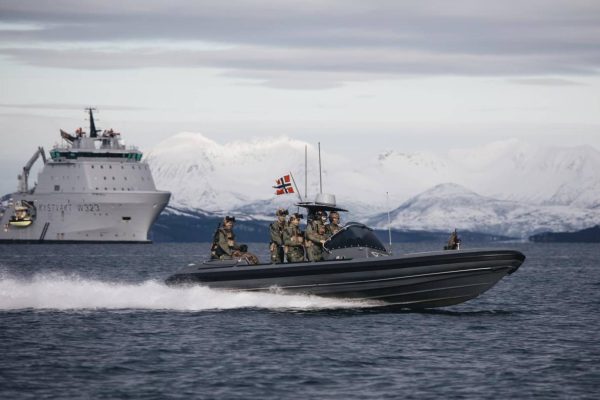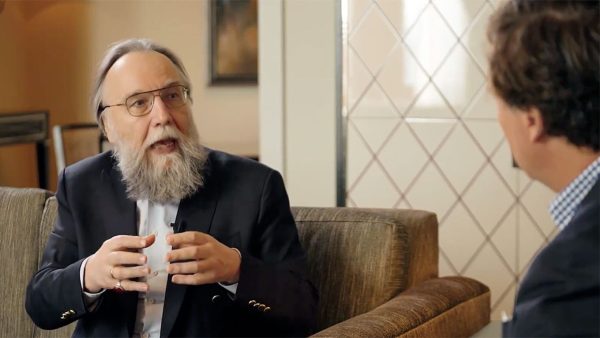The Kremlin’s forces are making progress west of Avdiivka and west of Bakhmut. Despite an acute shortage of ammunition resulting from political disagreement in the US Congress, Ukraine is holding the line at key points in the Eastern and Southern fronts, including Kupiansk, Kreminna, Marinka, and Robotyne.
Following the Ukrainian withdrawal from Avdiivka, Russia has been in complete control of the city since February 17-18 and is seeking to advance further west from there. In a recent 18-day period, it moved forward by around 8km (5 miles), a significant advance in a conflict that has been compared to the attritional warfare of World War I.
The Russian approach consists of long bombardments with huge glide bombs of up to 1,500kg (3,300lbs) to destroy hardened fortifications, plus artillery and rocket artillery, followed by advancing infantry. Village after village is destroyed in this way.
To the west of Bakhmut, Russia has advanced about 9km and reached the village of Ivanivske within the last month. That lies about 19km from the strategically important town of Kostyantynivka, which had a pre-war population of 70,000.
Russian efforts to advance near Kupiansk, Kreminna, Marinka, and Robotyne (the bloodied trophy of Ukraine’s summer counter-offensive) have so far failed.
Ukraine has faced two major problems, and can so far find only partial answers. The biggest issues at the front are defenselessness against Russian air attacks with devastating glide bombs, and the lack of artillery and anti-aircraft ammunition.
Europe is working hard to raise production, with output of the standard 155mm artillery shell expected to reach 1.4 million by the year’s end, a near-tripling of last year’s figure. But Ukraine still relies on US arms plants to send most of its shells, and shipments have been stalled by the House of Representatives; no rapid solution appears to be in sight.
In the south, Ukraine continues to eliminate Russian ships and boats with sea drones. The Ukrainian attacks are also approaching the Kerch Bridge, where it sank a 1,700-ton Russian missile corvette on March 6, so adding to a growing list of warships destroyed and damaged.
The fight against Russian military supply lines for the southern front, 90% of which currently run via Crimea, is also a race against time for Ukraine. Russia is feverishly building alternative supply routes which, if completed, would make the situation more difficult.
Ukraine urgently needs more long-range precision weapons, including more of the Anglo-French Storm Shadow/SCALP-EG cruise missiles, of Germany’s Taurus, along with US ATACMS ballistic missiles with monobloc warheads, more GLSDB ammunition and more anti-aircraft missiles.
Ukraine also needs a concerted effort by its partners to supply components and parts for domestic production of drones, missiles, and cruise missiles.
Ukraine’s partners should not only try to sell finished products to Ukraine to promote their own defense industry but also support the development of Ukrainian production with components and parts.
The pragmatic use and conversion of decommissioned, stored and soon-to-be written-off ammunition, missiles, and guided missiles can leverage potential for Ukraine, both for air strikes and for so-called FrankenSAM, which mix old Soviet-era systems with Western technology.
Ukraine’s partners need to open construction plans for vehicles and weapon systems to ensure the independent production of spare parts, maintenance, and repairs much closer to the front, to save on rail transportation and shorten downtimes.
And Ukraine itself must put an end to the political tactics and procrastination surrounding mobilization and quickly agree on new call-ups to strengthen a weary and aging army (the average age of Ukrainian front-line troops is 43), and to develop new and better methods of troop training.
The admirable Czech initiative for the global procurement of more than 800,000 artillery shells (500,000 for 155mm guns and 300,000 for 122mm weapons) should help Ukraine to stabilize the front and regain the upper hand. The EU should meanwhile draw radical conclusions from its own significant failings on the ammunition issue.
Ukraine’s European partners must urgently pull themselves together after the dithering and uncertainty of recent weeks, and make a joint effort to turn the balance of power in Ukraine’s favor by providing military aid immediately before the Russian presidential elections.
Since “elections” are also being held in the occupied territories of Ukraine, Ukraine’s partners cannot recognize the Russian presidential elections.
In addition to military aid and long-term bilateral security agreements with Ukraine, a path to the security guarantees of NATO membership is also required to end this war.
Nico Lange is a Non-resident Senior Fellow with the Transatlantic Defense and Security Program at the Center for European Policy Analysis (CEPA). He is also a Senior Fellow at the Munich Security Conference in Berlin and Munich and teaches military history at the University of Potsdam. Lange served as Chief of Staff at the German Ministry of Defense from 2019-2022.
Europe’s Edge is CEPA’s online journal covering critical topics on the foreign policy docket across Europe and North America. All opinions are those of the author and do not necessarily represent the position or views of the institutions they represent or the Center for European Policy Analysis.





